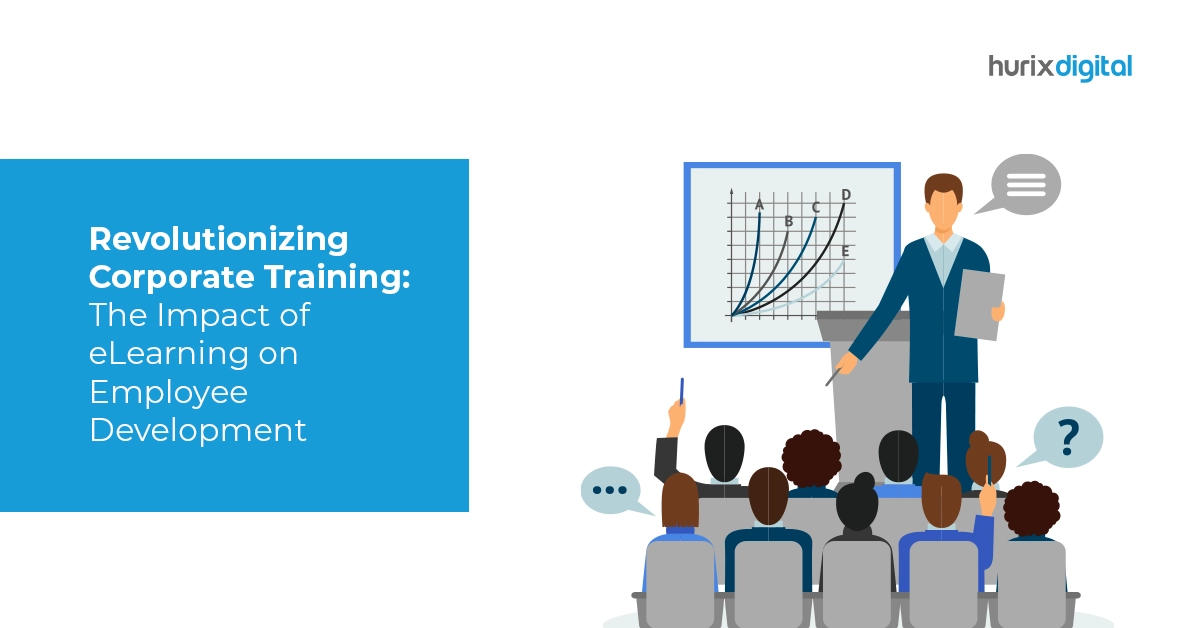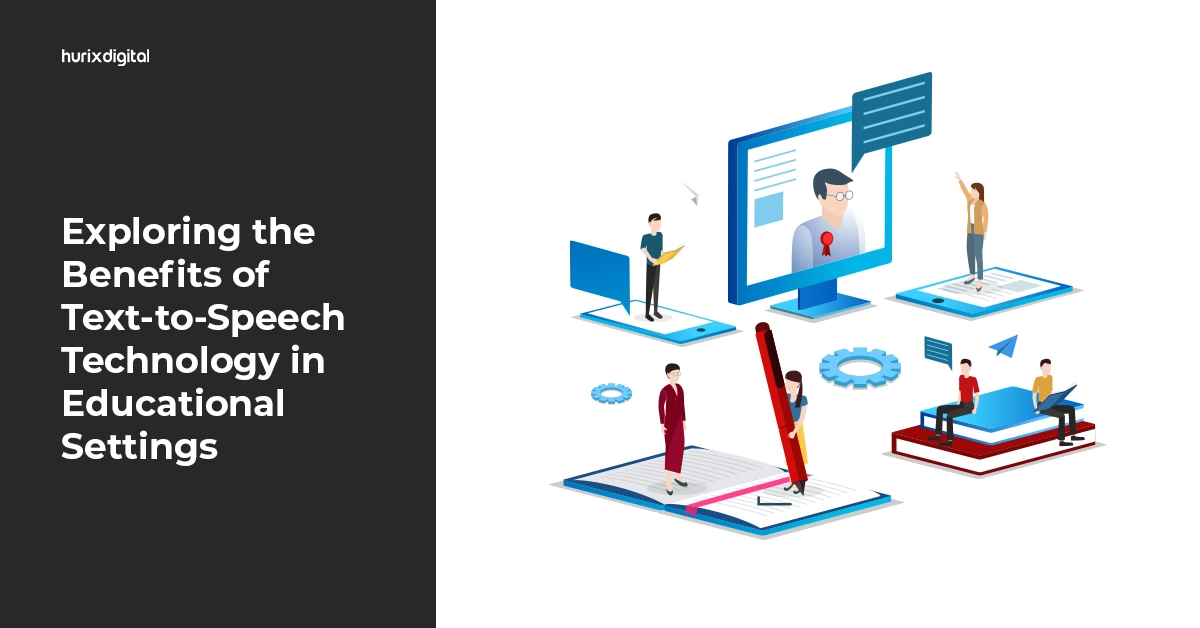
Revolutionizing Corporate Training: The Impact of eLearning on Employee Development
Summary
This blog discusses eLearning’s impact on corporate training, highlighting skill enhancement, employee retention, VR-enhanced soft skills, cost-effectiveness, time efficiency, teamwork, digital records, and quality assurance.
When interactive whiteboards entered the training scenario, they created quite a stir because they substituted the obsolete chalk and duster as a vital instrument for learning and development.
The advantages of eLearning in the workplace are currently sweeping the globe. Therefore, it comes as no surprise that this industry is anticipated to grow between 2024 and 2028 at a 14.3% compound annual growth rate to reach an estimated value of $153.41 billion. Are you eager to learn more?
This blog outlines the top 8 impacts of eLearning on corporate training programs. Let’s dive in!
Table of Contents:
The Impact of eLearning on Corporate Training and Development
Here’s a snapshot of how eLearning is revolutionizing corporate training and development:
1. Individualized Skill Enhancement
Sometimes you require a certain skill set to be acquired by everyone at work. Every worker, however, has a distinct role and needs to develop in that specific area.
eLearning is suitable since it gives educators the ability to tailor the curriculum and find courses that correspond to the specific requirements of every learner. Workers can focus on improving what they lack or concentrate on developing a variety of competencies.
Executives could gain from eLearning in equivalent ways as their staff members. Enrolling in training programs will help you learn how to motivate employees and hone your leadership abilities.
Also Read: Inclusive Learning to Address the Diverse Needs in Workforce Development
2. Increased Employee Retention
In the United States, 3 to 4.5 million workers quit their jobs each month; 94% of these individuals claim they would have continued to stay if their company had provided better learning opportunities. One of the main reasons for premature retirement and work disappointment is the dearth of opportunities for career growth.
Employers not only save money and time when using eLearning, but it also outperforms outdated approaches in terms of increasing worker proficiency and retaining employees. When there are possibilities for live instruction, eLearning provides a more compatible foundational training environment and enables educators to provide greater insight into the topic or coaching.
Employers can select the appropriate training for their position and profession while maintaining the freedom to establish their own goals and instruction schedules with the aid of a learning management system (LMS).
3. Improved Soft Skills with the Use of VR
Virtual reality training in the workplace is a more effective way than traditional training methods to learn and practice a wide range of soft skills.
In virtual reality (VR), students are fully submerged in an authentic virtual world designed to mimic their workplace, allowing them to feel a sense of “involvement.” This indicates that the VR experience is being processed by their minds like that of real life, which enhances the authenticity and memorability of their soft skills instruction.
Additionally, this experiential training improves their long-term retention. As often as necessary, they can practice soft skills in a real-world setting to boost their self-assurance and competence at work.
4. Cost-Effective Learning Solutions
eLearning employee training can replace the requirement for in-person instruction and the associated costs since it is available for workers in and out of the workplace.
In fact, to cut down on transportation costs and other incidentals related to live classes, mobile learning is currently offered by 67% of organizations. Thus, scalability—one of the primary drawbacks of a traditional learning approach—can be addressed by corporate eLearning.
Since job demands are constantly changing, most organizations require that their employees be involved in ongoing training to help them widen their expertise as well as enhance new skills. Therefore, it is cost-effective to be able to modify and customize your eLearning course to fit the training requirements of your staff.
With eLearning, you can easily and affordably update instructional content with current modifications to company policies and procedures.
5. Time-Saving Effectiveness
Yet another benefit is that eLearning significantly boosts time management. Thanks to the rapid deployment of virtual learning resources, eLearning enables your business to get going right away.
(Note that since these internet-based assets don’t need huge cargo or a lot of printed material to distribute knowledge, they are frequently also advantageous for the surroundings.)
Secondly, since you don’t have to account for the traveling time of your staff to participate in training, eLearning means less time spent out of the office. This spares your staff members the trouble of finding an off-site training facility, as well as the time it would take them to complete another assignment during particularly hectic times of the year.
6. Enhanced Teamwork and Productivity
eLearning solutions for corporate training make use of gamification. Training becomes a platform for interpersonal communication and team building through gamification. It maintains learners’ motivation to advance by introducing a small amount of friendly competition into the training program.
Employees are encouraged to display the skills of their team and cooperate to win when they are grouped according to their branch and their growth is evaluated collectively.
Game elements like ranks and dashboards are also providing teams with immediate input on their learning advancement. The outcomes thus speak for themselves. After completing a gamified training program, more than 54% of recent hires say they were extremely productive.
7. Digital Management and Maintaining Records
In terms of company profitability, this is one of the main advantages of online training. Training typically entails hours of nerve-wracking managerial labor, especially in big companies.
Someone must maintain a record of which employees are assigned to what training course, who has finished, who is still working, who has even signed up, and more. In the case of eLearning, employees sign up for online training right away on the LMS, and the rest is easy. Writing instruments, documents, and overflowing ring-back files are not needed.
Administrators can access reports at any moment to see which workers have completed or begun their training, as well as who requires additional encouragement.
8. Enhanced QA (Quality Assurance)
The organization can be completely confident in the training’s content and quality once it has been designed. Businesses can also stop worrying about whether or not all of the important topics will be covered in the upcoming training session. They just need to let the staff members know that their expectations have been upheld.
Regardless of where they work, each worker in the company receives the same high-quality education.
Physical education can foster a lively learning environment, but the channel and the way the course plan is delivered may not be the same at all levels. However, these complications are eliminated with eLearning.
Also Read: The Role of Cultural Adaptation in Localizing Workforce Learning Content
Wrapping Up
The domain of corporate training and development is an essential foundation for the expansion and resilience of any organization. The advent of eLearning has completely transformed this field and changed the way businesses train their employees.
Looking for robust eLearning solutions for your organization? Head out to Hurix Digital! Whether for onboarding, ongoing training, or upgrading skills, our customized programs provide interesting and lasting learning opportunities.
Contact our expert team to learn more!

Performance, Results, Growth, and Life-Long Learning define my professional life. I am passionate about making workplace learning planful, purposeful, and impactful. I take pride in partnering with clients and bringing them the best in learning design and creating solutions that address business challenges.








